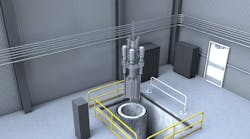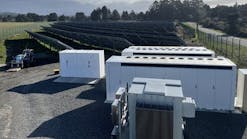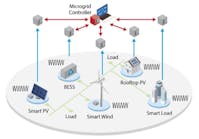Are We Ready for 2025? Exploring Hyperscale Data Centers, Power Challenges, and Emerging Solutions
Are we ready for the challenges 2025 will bring? As last year closed, there was a long list of topics and issues lined up to keep us busy in this new year. I’m equally sure there are more new wrinkles developing, there always are. If my mail is any indication, there’s no shortage of subjects vying for our attention. The array consists of press releases, media news stories, and in-depth reports along with stacks of whitepapers from the research laboratories.
Rather than trying to make a bunch of wild guesses, I’d prefer discussing some of more interesting viewpoints that keep popping up in my cyber mailbox. I guess that's what keeps this job so fascinating, because many of them are really stimulating. They cover a multitude of issues, but I’m going with a couple of topics that I wrote about last year that continue trending.
Hyperscale Plus Hypergrowth
Recently there has been a flurry of news stories about the pending crisis of increasing power demand from the hypergrowth in hyperscale data centers. A typical hyperscale data center consumes more than 50 megawatts of power and usually exceeds 10,000 sq ft (929 sq m) in size. We discussed these hyperscale data centers in September 2024, but that already needs updating.
As 2024 ended, the experts were thinking they may had been too conservative with their earlier data center load growth predictions. The latest forecasts now estimate that data centers will consume around 12% of the U.S. electricity generation by 2030. Also predictions indicate that the number of hyperscale data centers will double every four years. That’s not good news for utilities or grid operators. They need to be able to serve the growing numbers of these new hyperscale data centers along with their existing customers.
Since each new hyperscale data center represents at least 50 plus megawatts hitting the power delivery system, that eats up capacity at an astounding rate. But extra capacity is in short supply. “Charging Ahead” has reported on several technologies that can help with this condition, but there’s one that’s more pertinent to these circumstances. Do you remember we discussed nuclear microreactors powering microgrids back in the December 2023 “Charging Ahead” editorial? Well, there’s a recent update!
In 2020 Idaho National Laboratory (INL) started work on the MARVEL (Microreactor Applications Research Validation and Evaluation) project. INL revised their accomplishments recently. An INL report said the MARVEL team began fabricating microreactor components in 2024. It’s expected fuel will ship in 2025 with loading estimated in 2026. If all proceeds according to plans, the 85 kilowatt microreactor is expected to be online in 2027, but how does this tie to hyperscale data centers?
The operators of these hyperscale data centers are well aware of the challenges utilities face building new facilities to meet the needs of their customers. As a result, they’re investigating their own power sources. Small modular reactor (SMR) technology combined with grid-scale microgrids have caught their collective eye. Amazon signed three agreements with X-Energy to develop SMRs totaling about 600 megawatts for SMR projects in Virginia and Washington. Google announced 500 megawatts of SMR projects with Kairos Power, but it’s not just SMRs that have gotten the attention of data center operators.
The Co-Location Loophole
These operators have discovered that co-locating their data centers with existing nuclear power plants is advantageous. Last fall, Constellation Energy announced an 835 megawatt purchase power agreement with Microsoft for their data centers. That will require restarting Three Mile Island’s unit 1. In addition, Amazon has purchased a data center that uses power directly from the Susquehanna nuclear power plant’s bus.
That’s only a sampling of the plans being made by the tech giants regarding co-locating hyperscale data centers at existing nuclear power plants. Experts point out this doesn’t require new transmission, which speeds up the interconnection process for these new multi-gigawatt loads. The practice, however, is not without controversy in the form of reducing generation capacity to the power grid. There are also issues of unfairly shifting transmission costs onto ratepayers.
The Federal Energy Regulatory Commission has raised numerous concerns and is taking a closer look at the potential impacts. Distribution companies, transmission grid operators and regulatory agencies are also apprehensive over the potential of avoiding grid maintenance and other fees. It’s a complicated issue that’s not going away soon. It will probably be a topic of discussion throughout this year, and I can’t wait to see what else happens!


